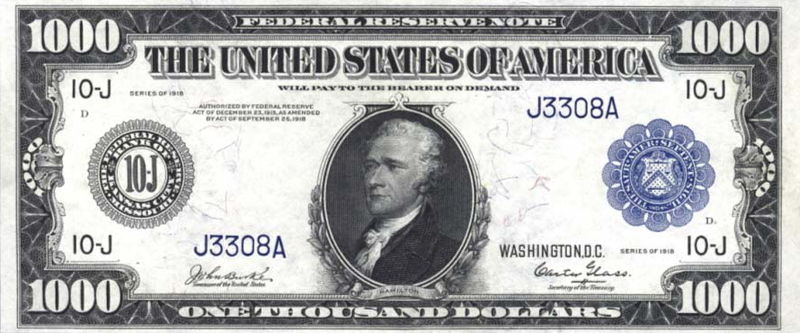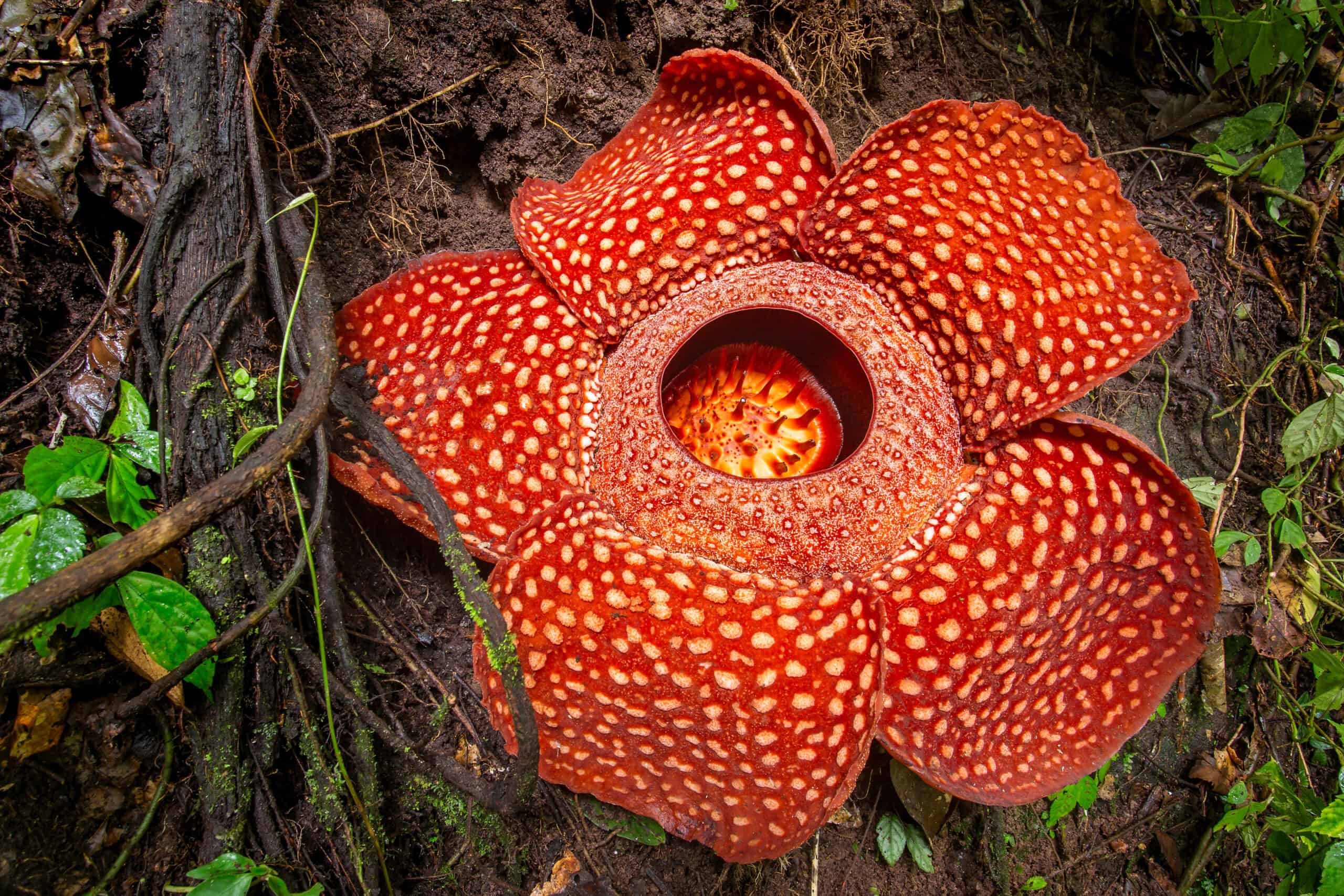Hydnellum peckii (Bleeding Tooth Fungus)

Known for its gory appearance, Hydnellum peckii exudes a bright red liquid that seeps through its white cap, resembling blood. Found primarily in North American forests, this mycorrhizal fungus forms a symbiotic relationship with coniferous trees. Despite its alarming look, the fungus isn’t toxic but is extremely bitter, deterring potential predators.
Clathrus archeri (Devil’s Fingers)
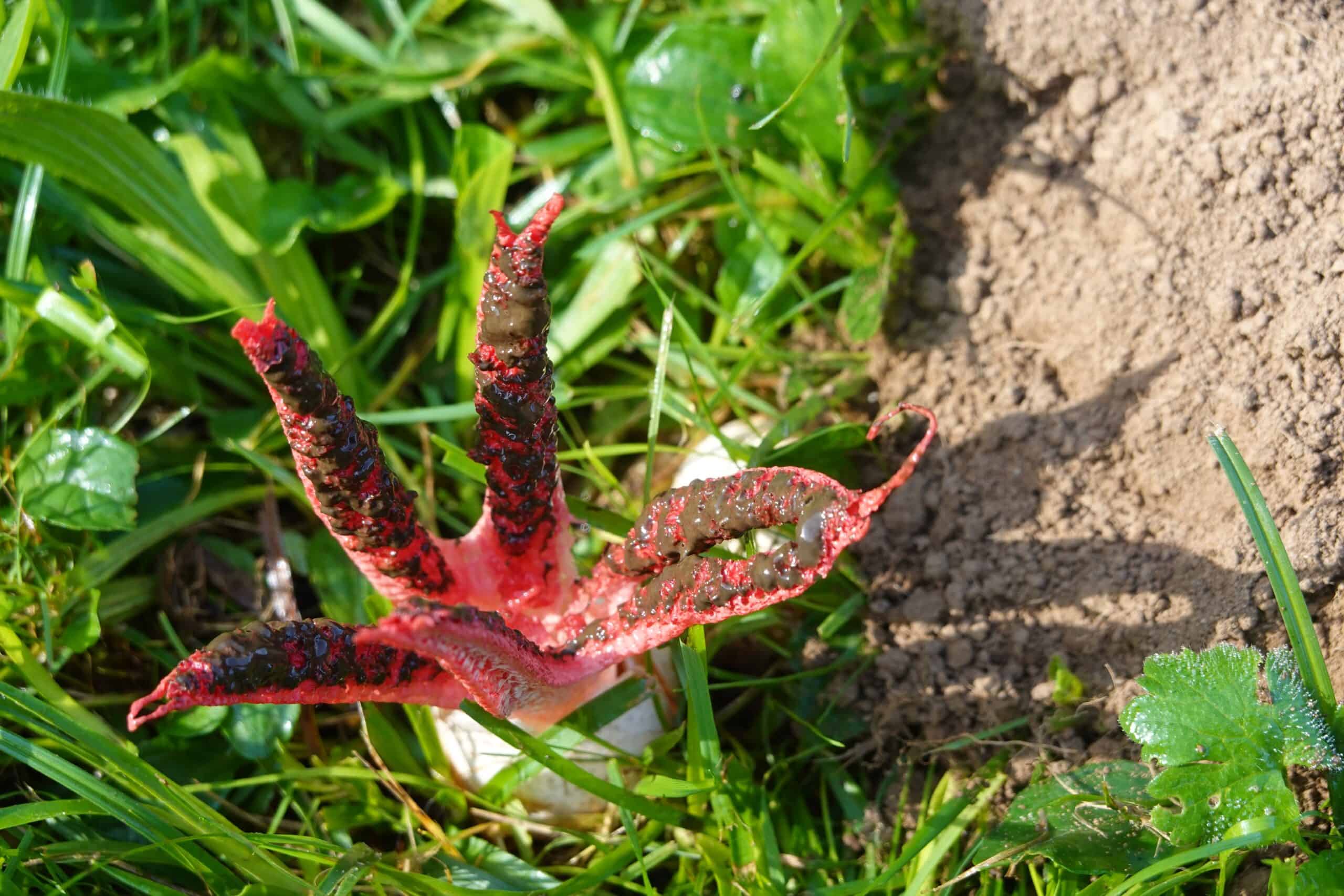
Resembling a starfish, Clathrus archeri emerges from an egg-like sac, unfurling its bright red, tentacle-like arms. Native to Australia and New Zealand, it emits a strong odor of rotting flesh to attract flies, which help disperse its spores. Its dramatic appearance and foul smell make it a standout among fungi.
Aseroe rubra (Anemone Stinkhorn)

This bizarre fungus features a star-shaped red cap with white arms and a brownish, spore-laden disc at the center. Found in Australia, Aseroe rubra emits a potent odor akin to sewage, attracting insects for spore dispersal. Its striking look and unpleasant smell ensure it’s noticed in its natural habitat.
Mycena chlorophos (Bitter Oyster)
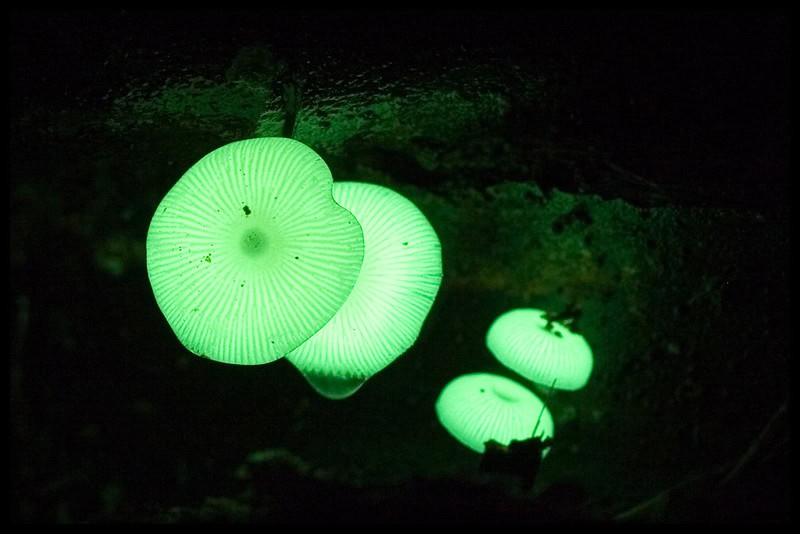
Mycena chlorophos is a bioluminescent fungus that glows green in the dark, creating an eerie nighttime spectacle. Found in subtropical regions like Japan and Brazil, it thrives on decaying wood. This glow-in-the-dark characteristic results from a chemical reaction in the presence of oxygen, providing a captivating display.
Xylaria polymorpha (Dead Man’s Fingers)
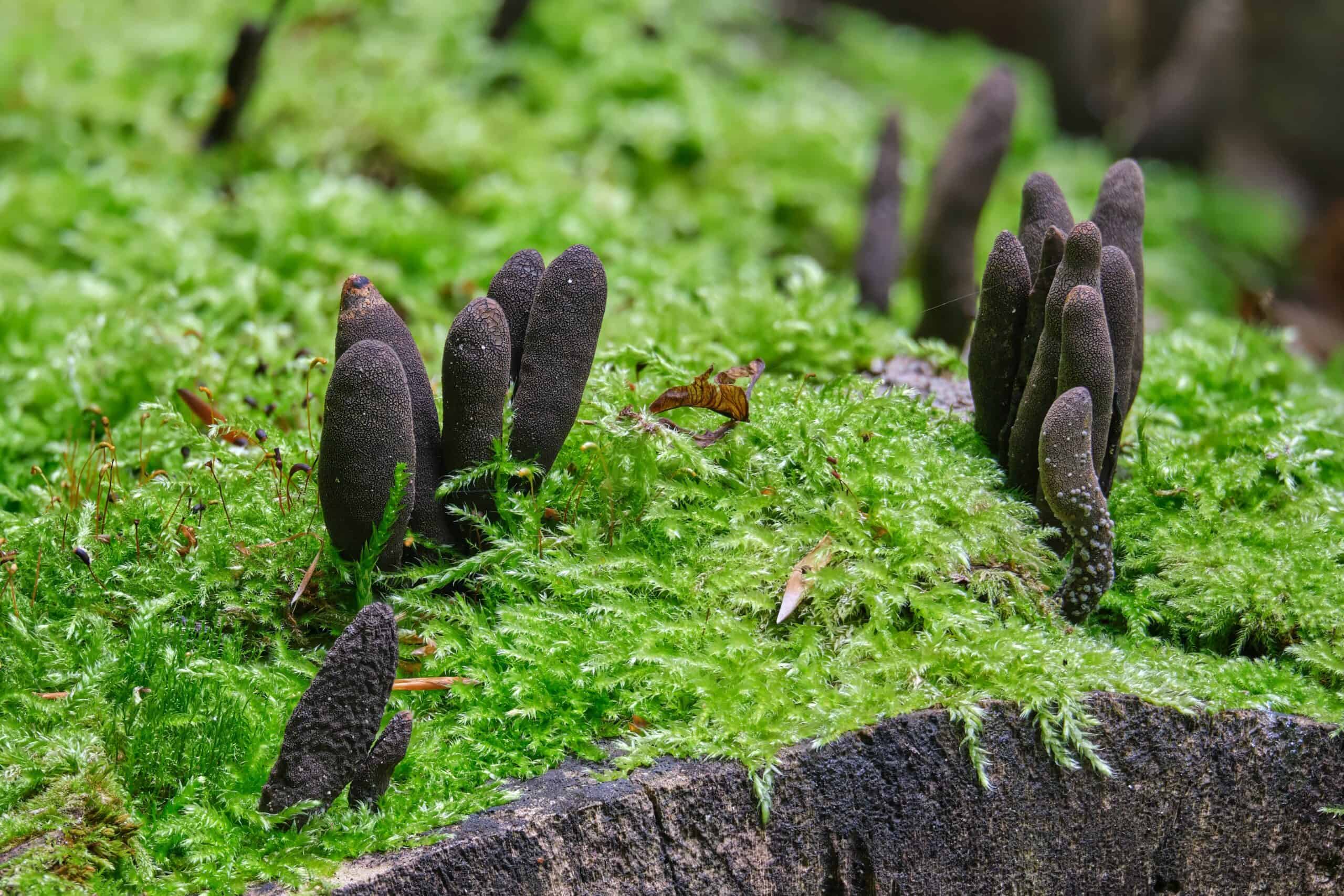
Named for its resemblance to decomposing fingers protruding from the ground, Xylaria polymorpha is a saprophytic fungus found in temperate forests worldwide. Its black, elongated fruiting bodies grow on decaying wood, playing a crucial role in nutrient cycling within its ecosystem.
Dictyophora indusiata (Veiled Lady)
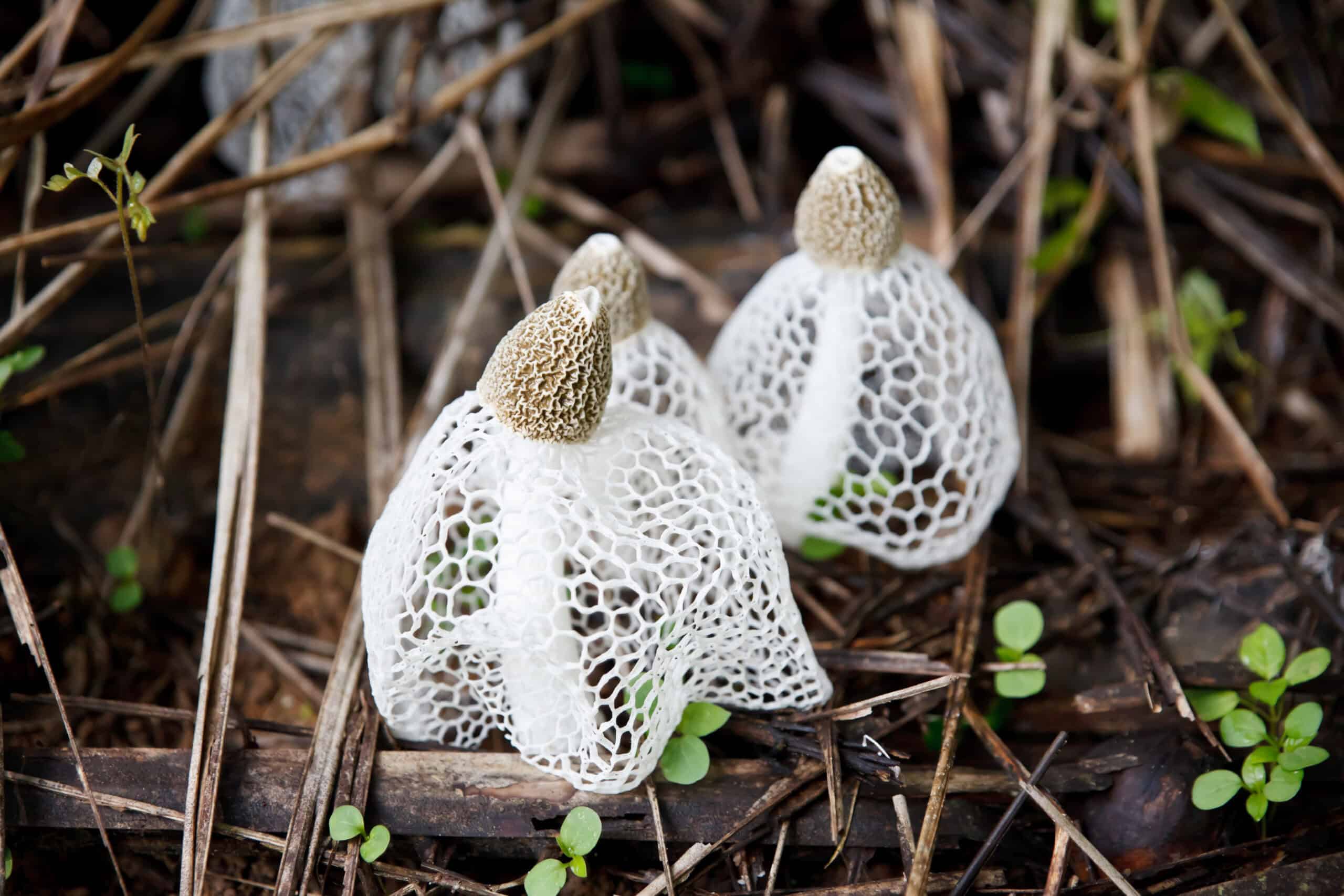
Featuring a delicate, lacy skirt around its stalk, Dictyophora indusiata is a visually striking fungus found in tropical regions. This stinkhorn fungus produces a pungent odor to attract insects, which in turn help spread its spores. Its elegant appearance and distinctive smell make it a unique find.
Aleuria aurantia (Orange Peel Fungus)
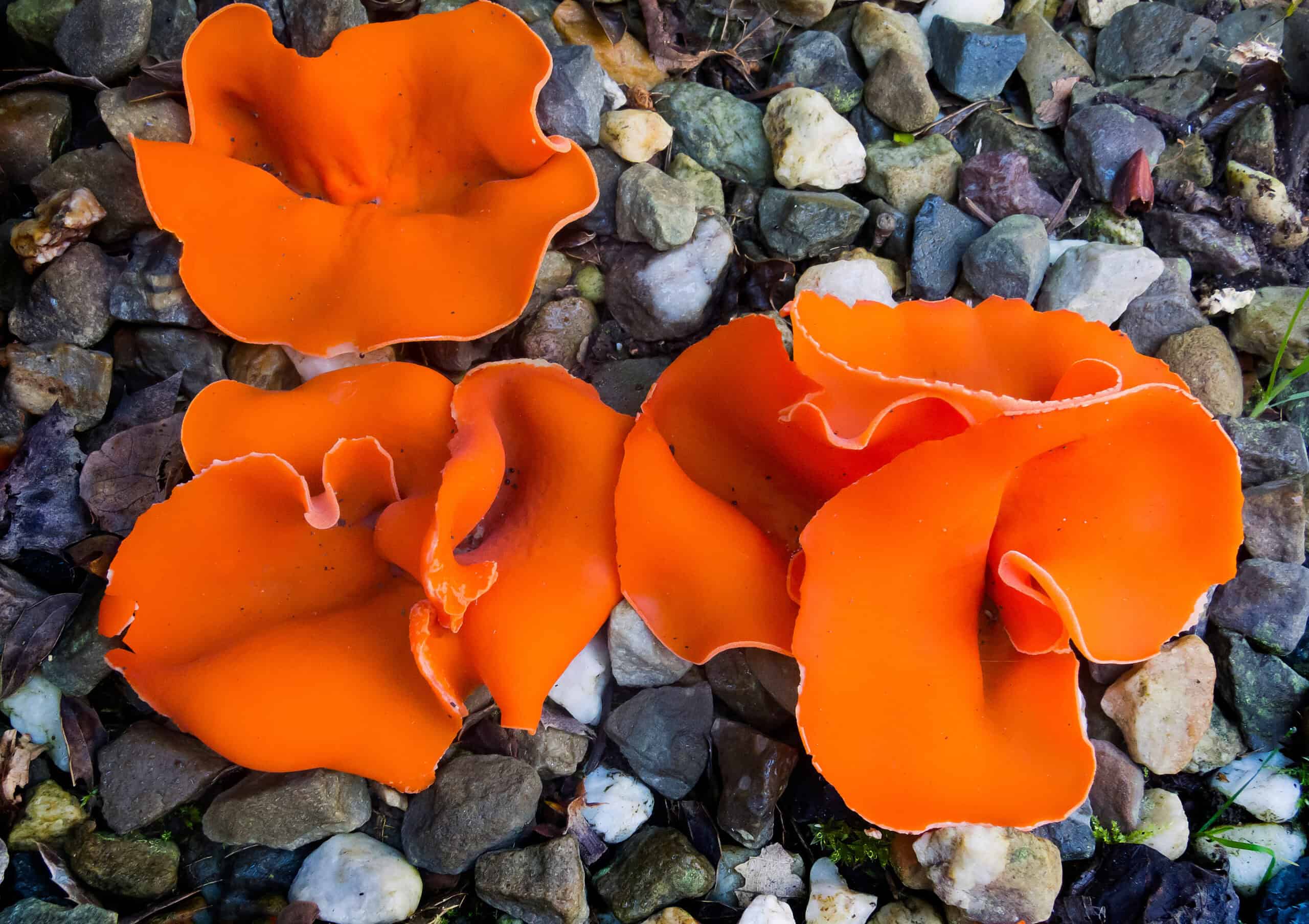
Aleuria aurantia resembles an orange peel, with its bright orange, cup-shaped fruiting bodies. Found in nutrient-rich soil and forest floors, this fungus is saprotrophic, aiding in the decomposition of organic matter. Its vivid color and unique shape make it easily identifiable.
Chorioactis geaster (Devil’s Cigar)
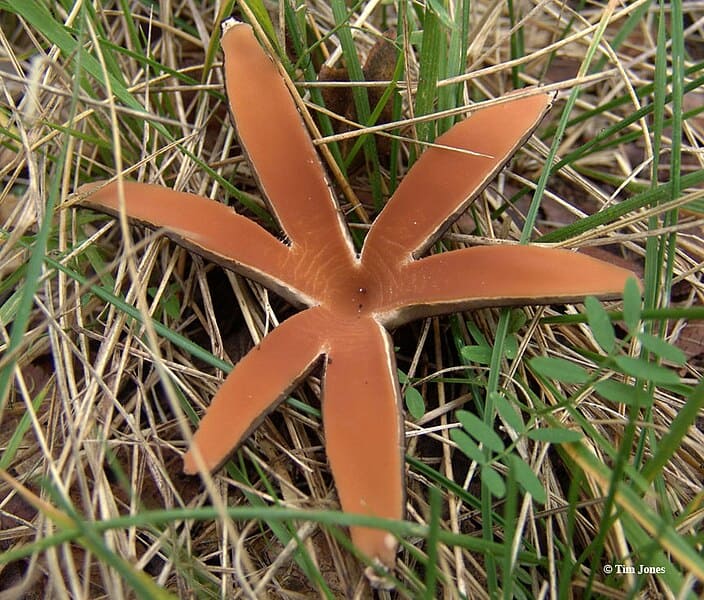
Native to Texas and Japan, Chorioactis geaster has a distinct cigar-shaped fruiting body that splits open to reveal star-like arms. It grows on decaying wood and is extremely rare, adding to its mystique. The fungus releases a puff of spores when it splits open, a characteristic that earns it its common name.
Laccaria amethystina (Amethyst Deceiver)
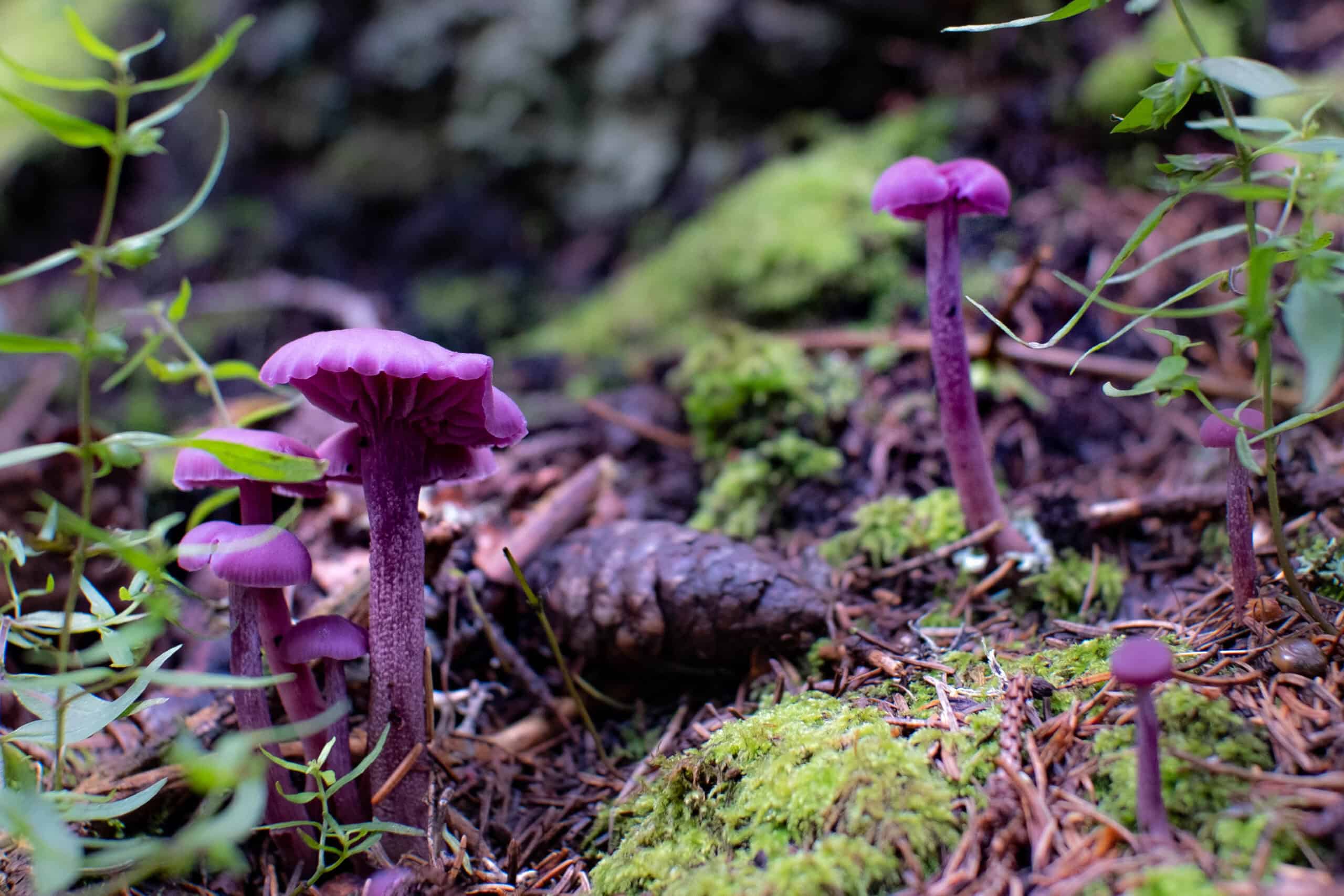
Known for its striking purple color, Laccaria amethystina is found in deciduous forests. This small, mycorrhizal fungus forms a mutualistic relationship with trees, aiding in nutrient absorption. Its vibrant hue fades over time, but it remains a captivating find on the forest floor.
Sarcoscypha coccinea (Scarlet Elf Cup)
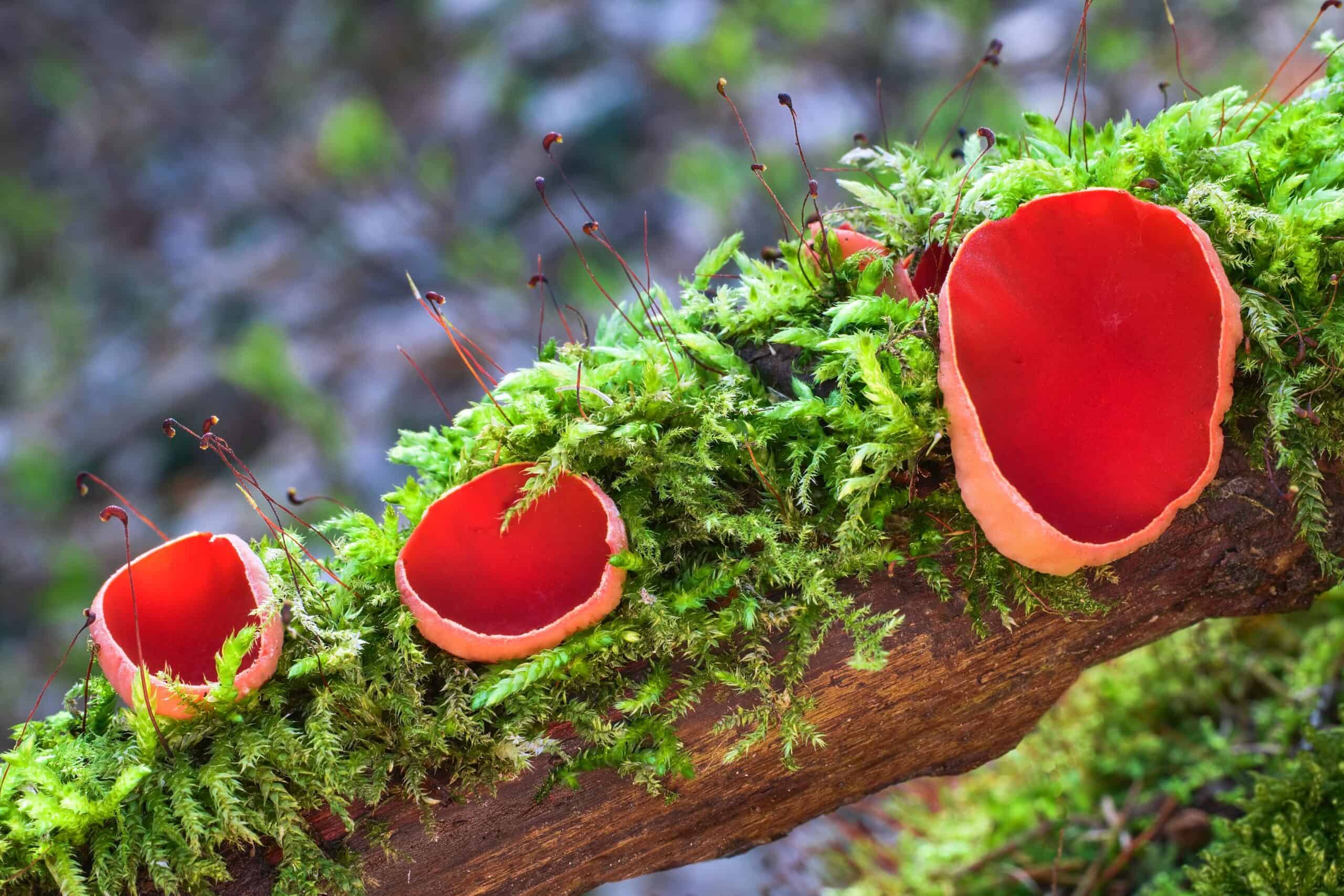
The Scarlet Elf Cup is named for its brilliant red, cup-shaped fruiting bodies. Found on decaying wood in damp, shaded areas, Sarcoscypha coccinea adds a splash of color to forest floors in winter and early spring. Its striking appearance and ecological role make it a notable species.
Ascocoryne sarcoides (Purple Jellydisc)
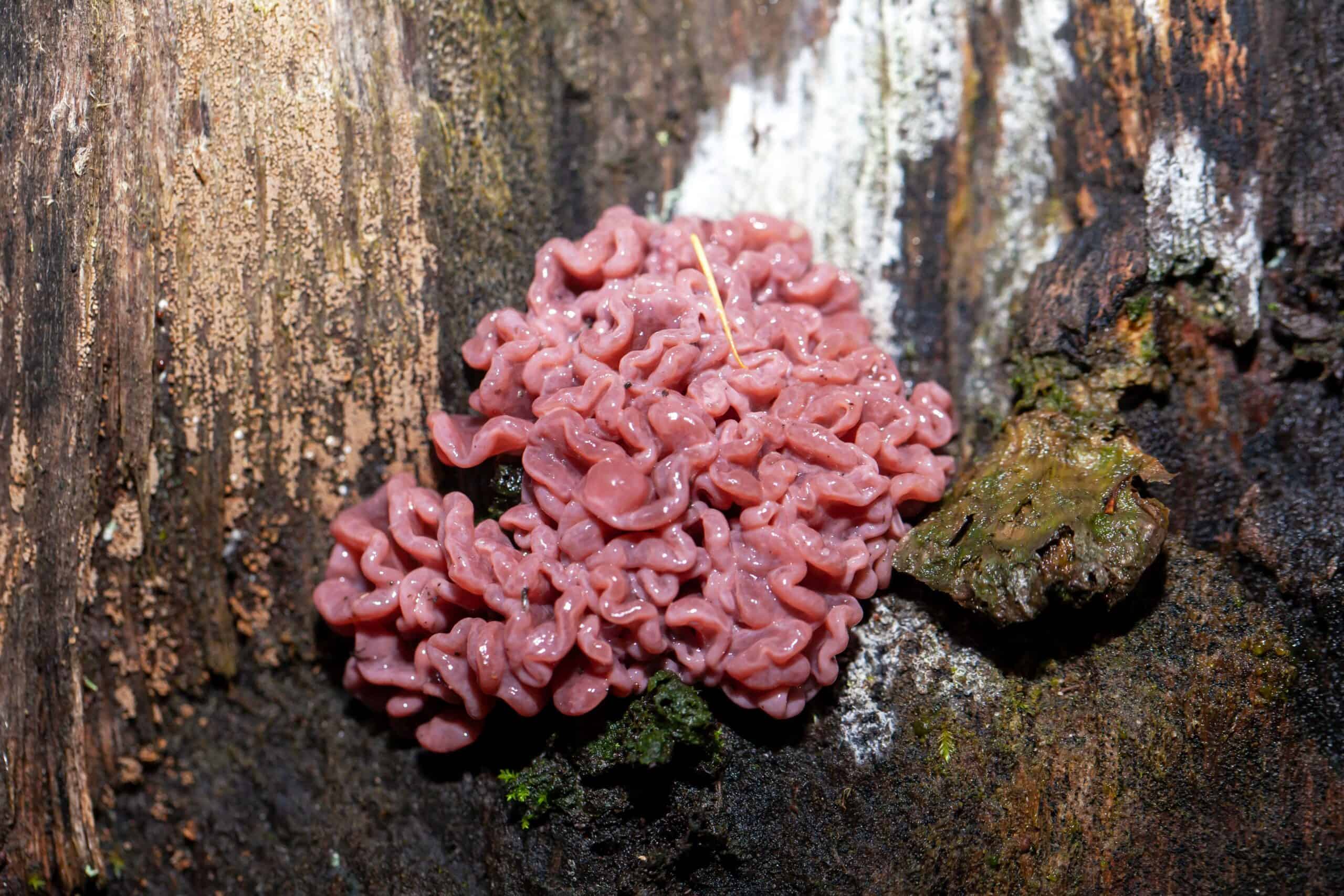
This gelatinous fungus features purple, disc-shaped fruiting bodies that grow in clusters on decaying wood. Ascocoryne sarcoides is saprotrophic, helping decompose organic material. Its jelly-like texture and vibrant color distinguish it from other fungi in its habitat.
Geastrum triplex (Collared Earthstar)
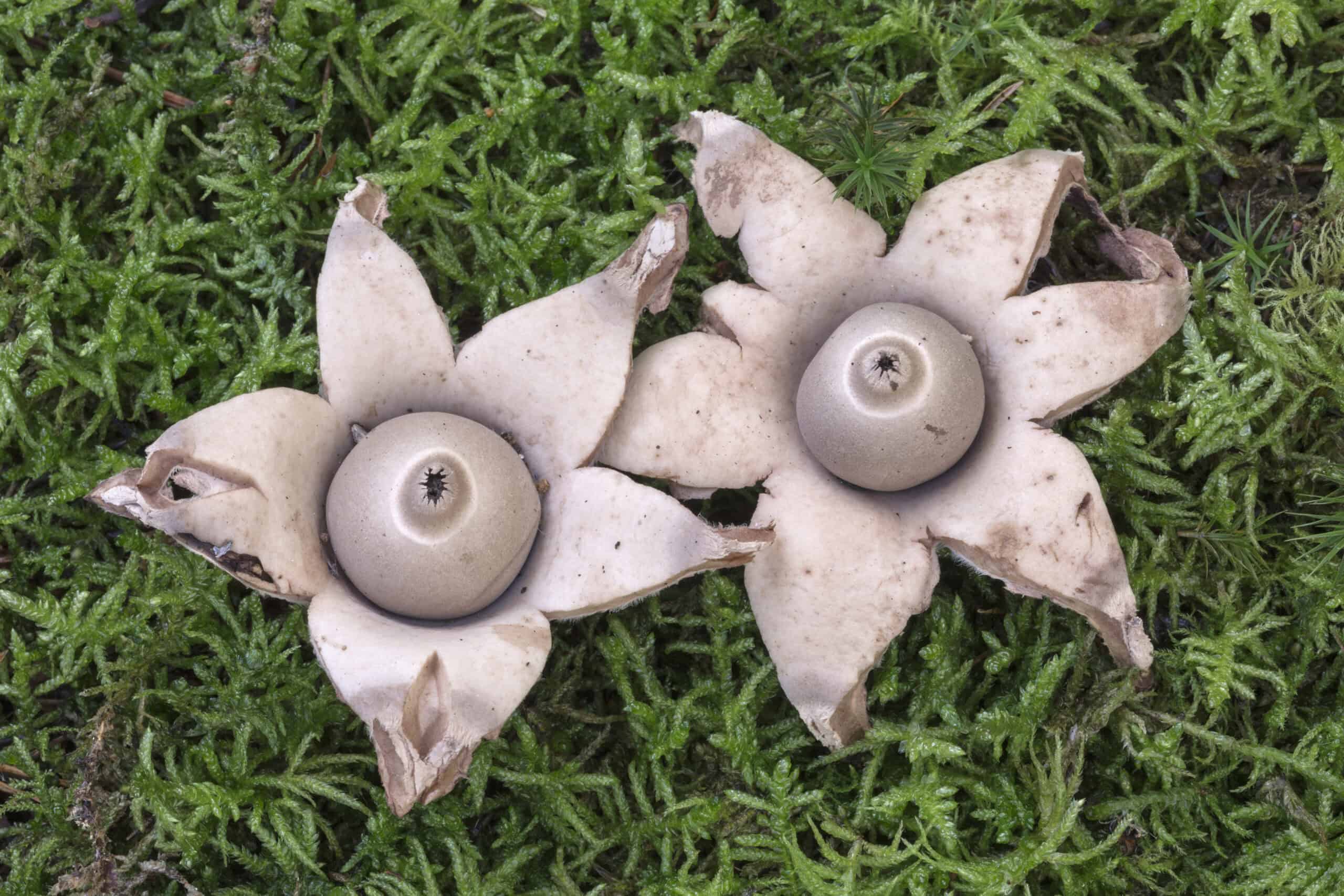
Geastrum triplex has a unique star-shaped appearance with a central spore sac and a distinct collar. Found in woodland areas, this fungus relies on wind and rain to disperse its spores. Its architectural form and ecological importance make it a fascinating species.
Pseudocolus fusiformis (Stinky Squid)
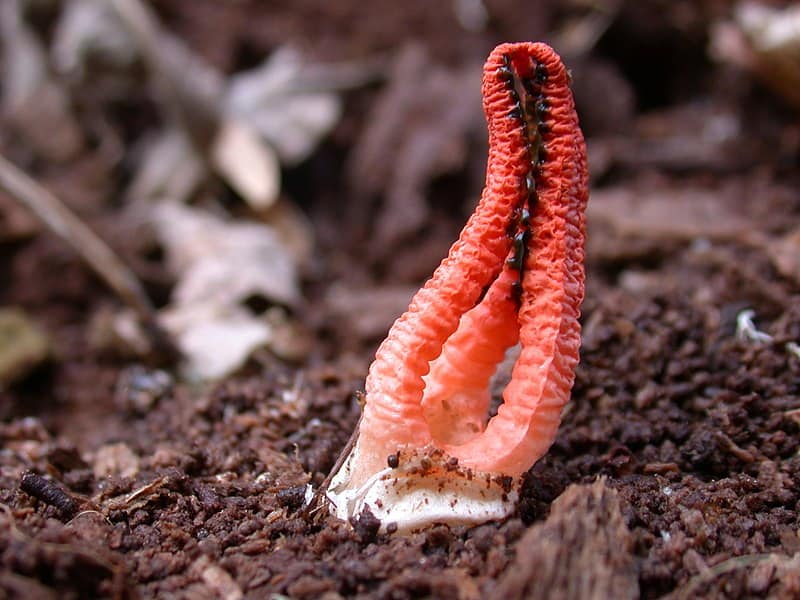
Native to North America, Pseudocolus fusiformis has a peculiar appearance with its elongated, red fruiting bodies resembling squid tentacles. It emits a strong odor to attract flies, which help spread its spores. This unusual look and smell make it easily recognizable.
Trametes versicolor (Turkey Tail)
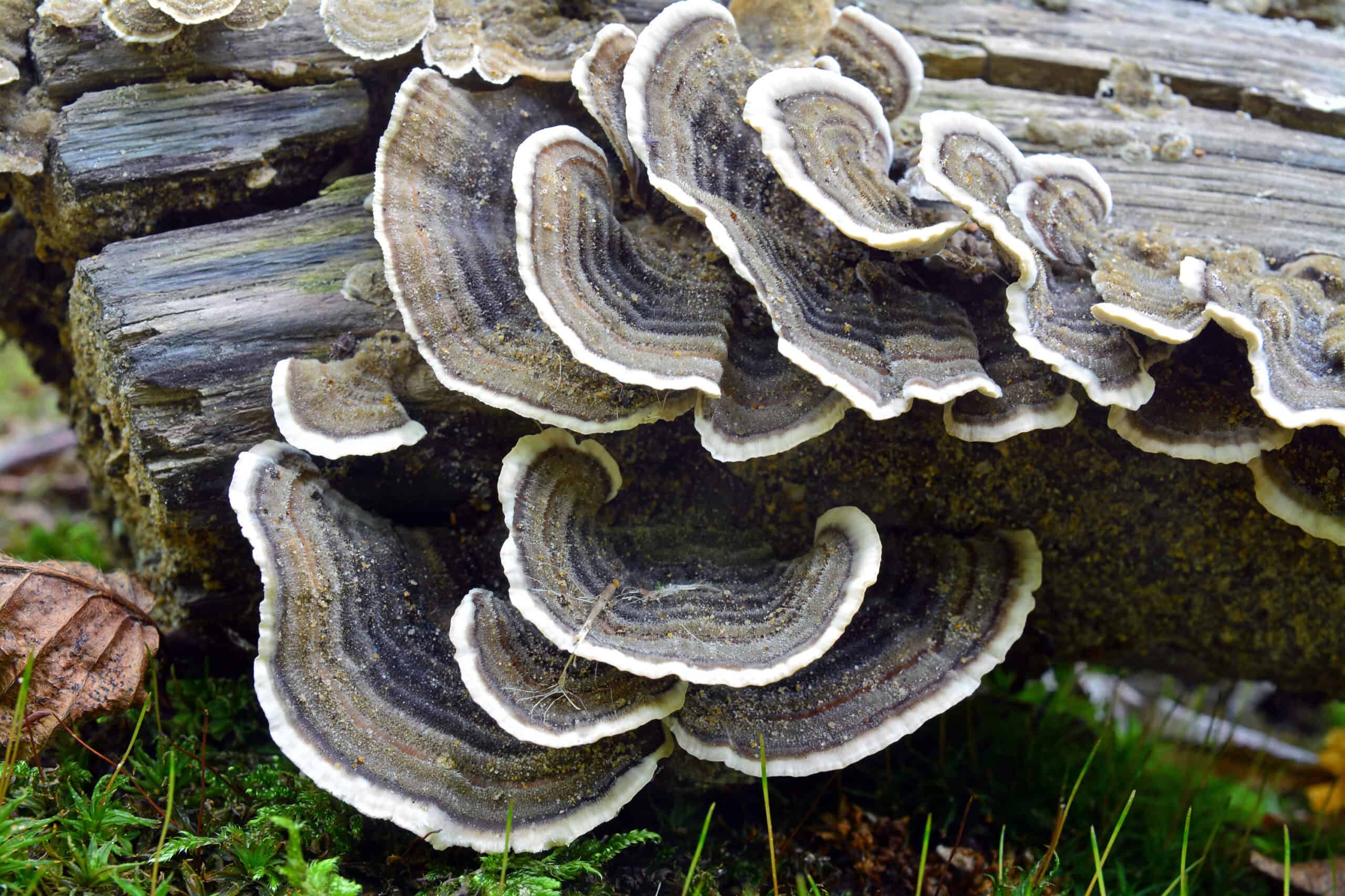
Named for its resemblance to a turkey’s tail feathers, Trametes versicolor displays concentric bands of various colors. This common polypore fungus is found on decaying logs and stumps, playing a vital role in wood decomposition. Its beautiful pattern and ecological function are noteworthy.
Leotia lubrica (Jelly Baby)
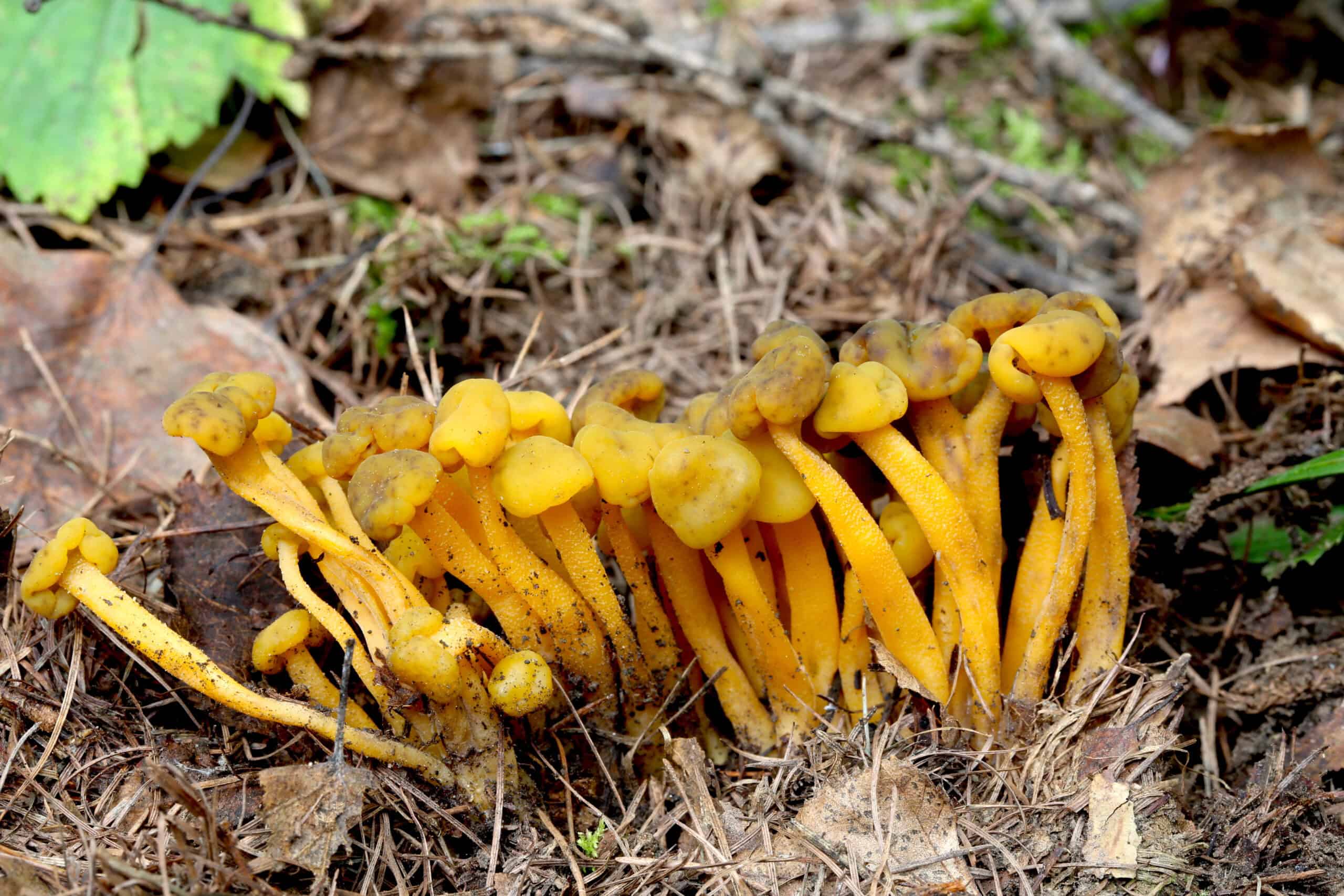
Leotia lubrica has a gelatinous, yellow to olive-green fruiting body that resembles a tiny club. Found in mossy or damp forest floors, this fungus thrives in temperate regions. Its unusual texture and appearance contribute to its distinctive identity.
Hypomyces lactifluorum (Lobster Mushroom)
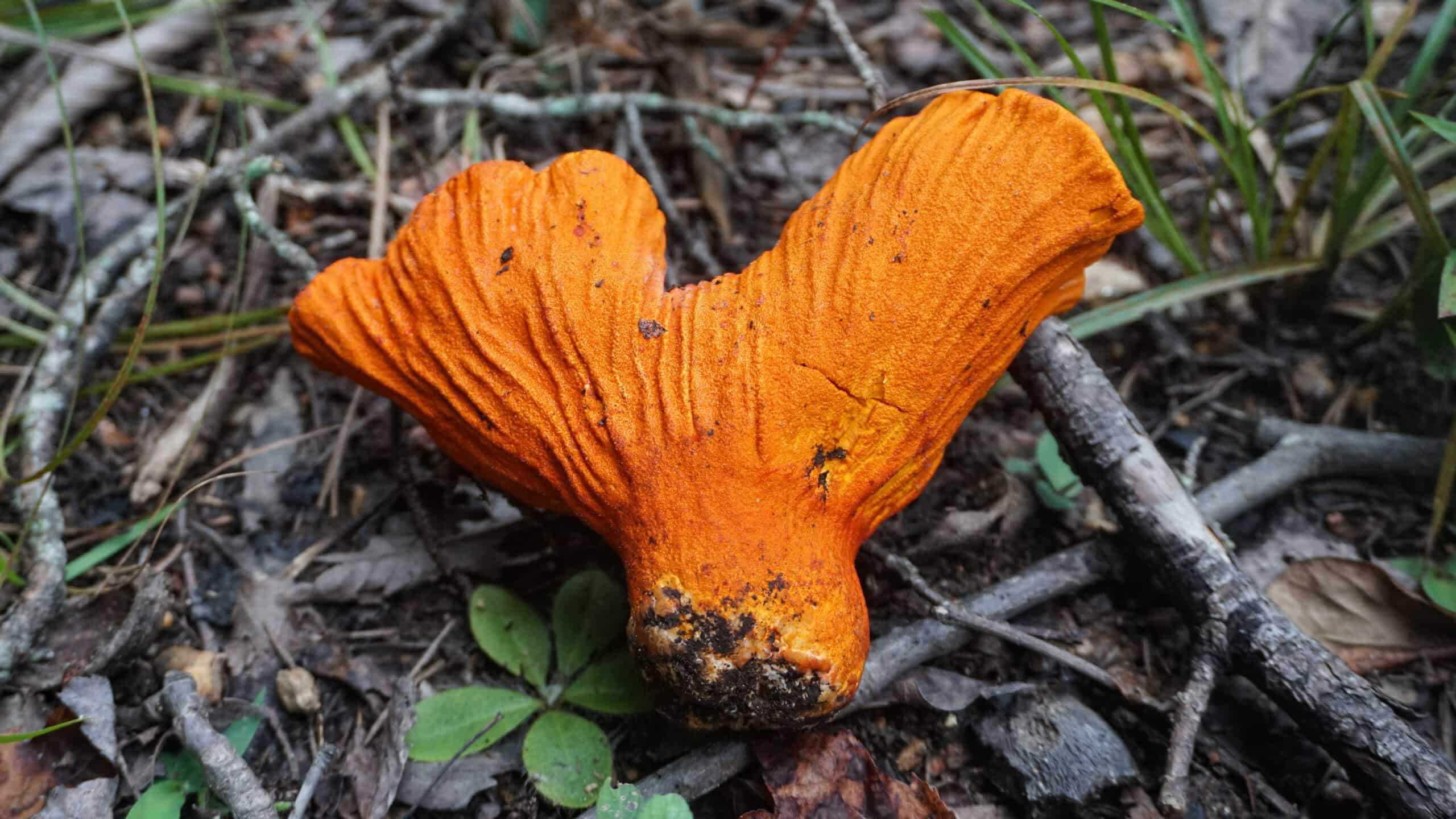
The Lobster Mushroom is actually a parasitic fungus that colonizes other fungi, turning them a bright reddish-orange color and imparting a seafood-like aroma. Found in North American forests, it transforms its host into a more palatable form, appreciated by foragers.
Rhizopogon rubescens (Pink Crown)
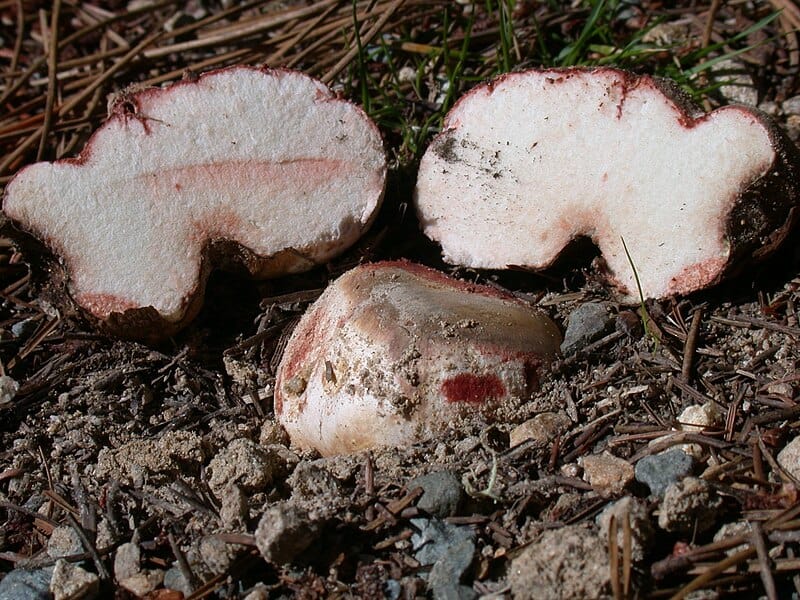
This mycorrhizal fungus forms symbiotic relationships with coniferous trees and produces pink, rounded fruiting bodies. Found in temperate forests, Rhizopogon rubescens aids in nutrient exchange between the soil and its host trees. Its subtle yet distinctive color sets it apart.
Entoloma hochstetteri (Sky Blue Mushroom)
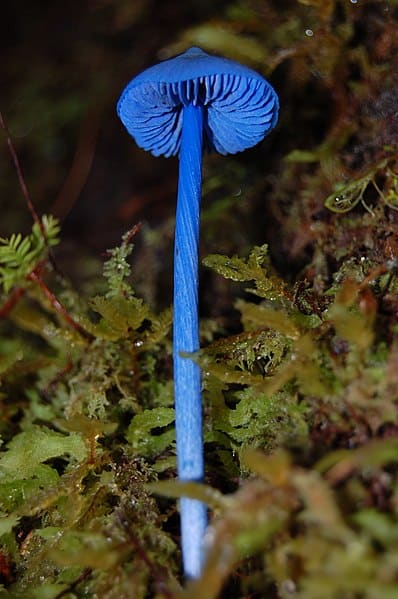
This rare, sky-blue mushroom is native to New Zealand and stands out with its vibrant color. Entoloma hochstetteri is a small, mycorrhizal fungus that forms mutualistic relationships with trees. Its striking blue hue and ecological role make it a captivating species.
This article originally appeared on Rarest.org.
More From Rarest.Org
Collecting rare banknotes is a fascinating hobby that offers a glimpse into the history and artistry of currency from around the world. These unique pieces not only tell stories of economic history but also showcase intricate designs and significant historical figures. Read more.
In a world filled with diverse career options, some occupations stand out for their uniqueness and rarity. These uncommon jobs often require specialized skills, unusual talents, or a willingness to embrace the unconventional. Read more.
The natural world is full of wonders, and among its most captivating are the rare plants that thrive in some of the most unique and often harsh environments on Earth. These botanical marvels, found in various corners of the globe, possess extraordinary characteristics that set them apart from more common flora. Read more.

